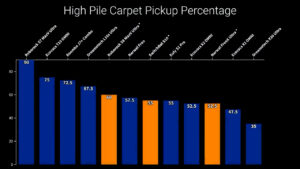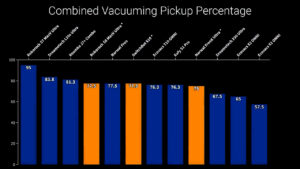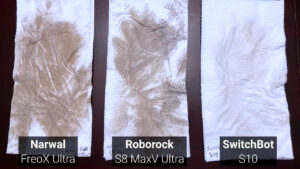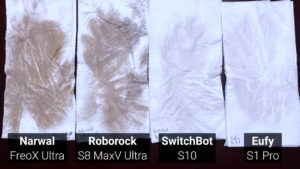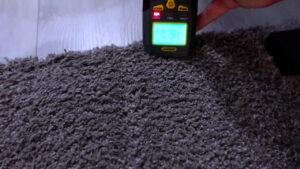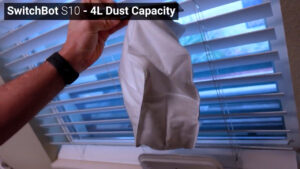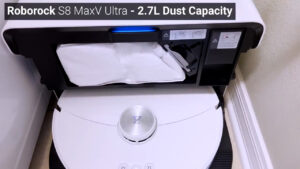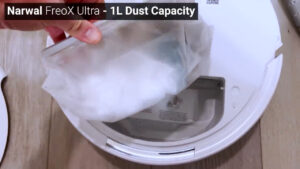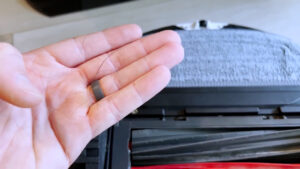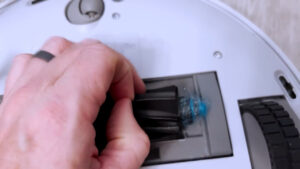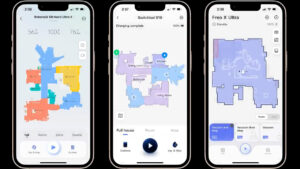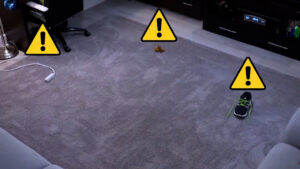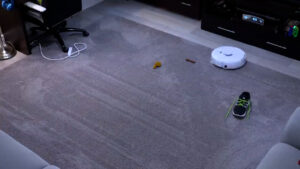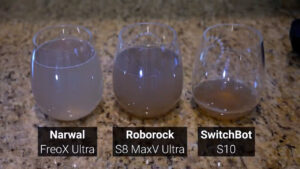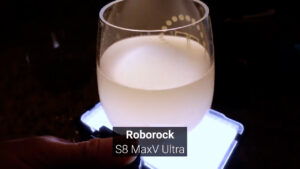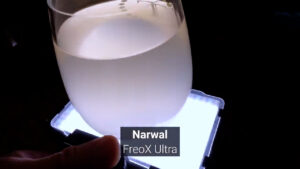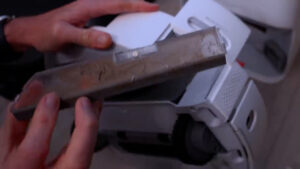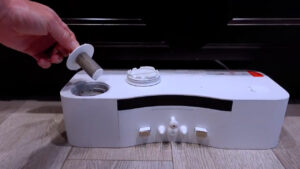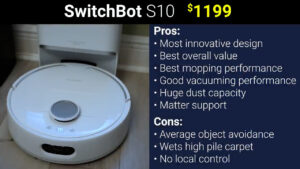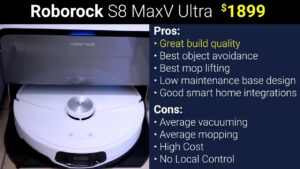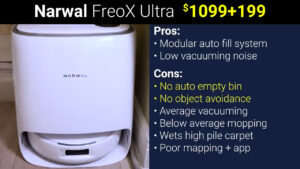Robotic Vacuums with auto fill and drain docks
May 23, 2024The ultimate goal of a robotic mop and vacuum is for it to keep your floors spotless without you ever needing to touch it, and the newest innovation is automatic fill and drain kits to directly connect your robotic vacuum into your plumbing system, meaning no weekly emptying and refilling mop water containers, but are these automated systems really the future or do they cause more problems than they solve?
Today I’ve got three different automatic fill and drain systems from Roborock, Narwal, and SwitchBot and I’m going to show you the installation options and process for each one, run them through a full set of vacuum and mop tests, and help you decide if these are a good choice for your house.
I’ll get to the mopping and vacuuming tests a bit later, but first, let’s talk about the new tech and the three unique approaches to these new auto refill stations.
Narwal FreoX Ultra Install
First, the $1399 Narwal FreoX Ultra has the most traditional solution with a drop-in replacement pump that goes into the existing base. The nice part about this setup is that you can start with the standard FreoX Ultra and upgrade to the auto refill station later. The drop in kit costs $200 and comes with the base station pump and reservoir unit, 6 meters of ¼” flexible supply line, 6 meters of 3/8” flexible drain line, a short ½” braided extension, a ½” tee, a powered water supply valve, flexible pipe cutter, and decorative pipe loom.
For this video I chose to install the Narwal FreoX Ultra in the bathroom using the water supply line from the toilet, dumping the wastewater directly into the toilet bowl, but the Narwal Kit would be compatible with all the installation sites in this video.
For this installation I bought a 7/8” to ½” NPT Tee connector to put in between my existing toilet water supply and the toilet then used the ½” braided line from Narwal to connect to the water supply valve. The ¼” flexible water supply line then runs from the valve to the back of the narwal unit, and the 3/8” flexible drain line runs back to the toilet where I’m using a 3D printed adapter to fit over the toilet bowl, but these adapters are also available on Amazon if you don’t have a 3D printer.
This installation took about 15 minutes, and I would rate it a 9/10 on ease of installation, anyone could do it, especially since toilet plumbing is very well standardized in the US.
Roborock S8 MaxV Ultra Install
Next up is the slightly less traditional $1899 Roborock S8 MaxV Ultra with the Auto Refill base, which as the name suggests is a completely different base unit from their traditional Ultra base, and a $100 upgrade. The Auto Refill base is much lower profile than the traditional base and still has the auto empty dust bag and mopping detergent reservoir, but no water tanks. The Roborock system comes with significantly fewer parts than the Narwal and only includes 6 meters of ¼” flexible water supply line, 6 meters of 3/8” flexible drain line, a ½” NPT to 1/4” push to connect Tee, and a set of retention rings.
For my initial testing I removed a piece of trim from my kitchen cabinets and ran the two flexible lines behind my dishwasher to my under sink area. I bought a universal garbage disposal drain line adapter to put in between my existing dishwasher drain and my P-trap and used the push to connect fitting for the 3/8” flexible drain line. The water supply line was a bit more complicated since Roborock only includes a ½” tee, but 3/8” is the standard in the US, so the best option is to buy a 3/8” tee and a 3/8” to ¼” push to connect adapter from Amazon, and I sent this feedback to Roborock, so hopefully they’ll start including the 3/8” adapter in the near future.
Once the under the sink connections were made, I cut the flexible pipe to size and pushed them into the fittings on the back of the S8’s base to complete the installation. Once I had the right fittings this install only took around 20 minutes but I have to give this a lower score of 6/10 for ease of installation since you need to be able to find and identify your existing pipe connections and get the right parts on your own.
SwitchBot S10 Install
Last, the most innovative and outside the box option comes from the $1199 SwitchBot S10 which has a very standard looking auto empty base for dust collection but a completely separate water exchange unit that doesn’t require a power source and fits under most cabinet toe kicks. When the robotic vacuum docks to the water station it uses the vacuum’s battery to power the water station’s pumps, filling the robot with clean water and emptying the wastewater tank.
The SwitchBot S10 also comes with significantly more included adapters than the other kits for the most flexibility in placement including both ½” NTP and 3/8” NPT tee connectors for sinks, a ¾” GHT connection for washing machines and toilets, one P-trap extension with a drain adapter, and one without, a dishwasher drainage tee, and preinstalled barb fittings on both the water supply line and drainage lines.
For my installation I drilled a small hole in the base of my under sink cabinet to run the water lines from the water station to the sink, but I had to remove the pre-installed fittings to fit the flexible pipe through that hole.
I then used the 3/8” tee supplied in the kit to connect to my existing cold water supply, but unfortunately the fitting didn’t seem like it was designed for US plumbing and never got tight enough to not leak, so I ended up just purchasing a 3/8” to ½” tee on Amazon and using that, though I did contact SwitchBot support and they said that using a double or triple gasket should allow their connector to work without leaking but for me, the peace of mind from using the correct fitting was easily worth the extra $13. And speaking of peace of mind the SwitchBot also includes a SwitchBot leak detector to put under your water supply connection point, and for good measure I picked up a couple Govee leak detectors for the other two install locations.
For the drain line I used both P-trap extensions and replaced my existing slip joint, then screwed on the pre-installed ½” drain connection, though I did find it was much easier to disconnect the barb fitting first, then screw on the ½” fitting and reconnect the barb.
The SwitchBot installation also took around 20 minutes, and it would have been an 8/10 for ease of installation if the included 3/8” Tee would have worked, but I have to drop it to a 5/10 because it’s never good to see a leaky fitting.
After installation all the base stations worked exactly how they should and filled and drained the mop water automatically. Ultimately though, the base stations are just accessories for the robot and there’s no point in getting a good base station with a bad vacuum, so it’s time to see how the Narwal, Roborock, and SwitchBot compare when it comes to mopping and vacuuming performance.
Vacuuming Tests
Starting with high pile carpet testing, I used a mixture of 10 g each of flour, salt, flax seed husks, and rice to simulate different sized dust and debris and I sprinkle that onto my high pile carpet. I then sent the vacuums out for a 2x clean using their highest suction power and I weighed the dustbin before and after the run.
Starting with the SwitchBot S10 which cleaned for a total of 47 minutes and picked up 22 g or 55% of the flour, salt, flax, and rice mixture, while using an alarming 77% of its battery. The Narwal FreoX Ultra was next which also cleaned for 47 minutes but picked up 21 g or 52.5% of the mixture, but only used 52% of its battery. And last the Roborock S8 MaxV Ultra only cleaned for 22 minutes, picked up 24 g or 60% of the mixture, and only used 24% of its battery to do so. And that means that for high pile carpet pickup these were average at best and well behind lower priced options like the Dreametech L10S and Roborock S7 MaxV.
Thankfully the hard floor vacuuming performance was significantly better and with the same 40 g mixture on the LVP flooring the SwitchBot S10 cleaned for 10 minutes and picked up all 40 g for a score of 100%, the Narwal cleaned for 16 minutes and picked up 39 g or 97.5% of the mixture, and the Roborock S8 MaxV Ultra ran for 8 minutes and cleaned up 38 g for a score of 95%.
So that means for combined vacuuming performance the SwitchBot and Roborock were tied with a total of 77.5% pickup and the Narwal was close behind at 75%, and here’s how those rank with other top vacuums without auto refill mopping stations.
Mopping Tests
To test their mopping performance, I spread 10 mL of Florida mud in a roughly 2 ft by 2 ft square on my LVP flooring and dried it completely with a hair drier. I then sent each vacuum on a 2x vacuum and mop run with the mop water set to maximum and the vacuum power set to normal. After the test I sprayed the area with three sprays of water, wiped it clean with a paper towel and set the towel aside to dry, and in between each run I hand mopped and manually dried the floor.
And here are the results of the paper towel test where you can see that the SwitchBot S10 was in a completely different league than the Roborock and Narwal, and that’s largely due to its new roller style mop.
The Roborock S8 MaxV has their Vibrarise 3.0 mopping system which has a towel style mopping pad with sliding and vibrating sections under the mop that are supposed to help scrub stains from your flooring, where they end up on the mopping pad to be eventually washed off back at the base station.
Similarly, the Narwal FreoX Ultra uses spinning mopping pads that can scrub your floors but ultimately that mud and dirt stays on the pads until the next time the robot goes back to the station.
In contrast the SwitchBot S10 uses its on board water tank to constantly add clean water to the roller and then squeeze out dirty water into its onboard reservoir and finally into the dirty water tank that will get emptied using the water station.
Not only does the roller style mop do a better job of initially scrubbing the stains free, but it also doesn’t spread any of the dirt or mud around since the roller mop is constantly being cleaned.
The only other mop currently on the market with that system is the Eufy S1 Pro, so for comparison I reran the test with the Eufy and you can see that the paper towel test for the S1 was almost identical to the S10, with the Eufy being just ever so slightly cleaner.
I also followed the robots around with a moisture meter to test how well their mop lifting strategies worked, and both the Narwal and SwitchBot had issues with their initial entry onto the carpet that caused the wet mop to drag, while the Roborock’s 20 mm of mop lift was able to keep even this high pile carpet completely dry.
Dust Bin Capacity
But, circling back to the whole point of these auto empty and refill stations, I wanted to get an idea of exactly how long you could go without paying attention to your robotic vacuum at all, and that requires more than just a mop water filling system. I took a poll on my YouTube community page and after over 1000 responses 36% said that the most frequent reason they have to interact with their robotic vacuum is to empty the dust bin or bag.
And thankfully auto empty dustbins have gotten to the point where they basically never clog and only need to be emptied every couple of months. To test their ability to clear the on board dust bin without clogging I load them up with matted cotton balls to try to trigger a clog, and most vacuums I’ve used in the last two years can easily clear six cotton balls without any problem, and these were no exception. And as far as dust bag capacity the SwitchBot S10 has a massive 4 L dust collection bag compared to the 2.7 L bags on the Roborock S8 MaxV, and unfortunately the Narwal FreoX Ultra doesn’t have an auto empty system and instead uses what it calls hair compression technology to maximize the capacity of its on board 1 L vacuum bags, but even best case scenario with perfect hair and dust compression the Narwal dust bags will need to be changed at least four times as often as the SwitchBot and twice as often as the Roborock.
Hair Tangle Tests
12% of responders said that the most frequent maintenance they do is removing hair from the robot’s brush roller, and thankfully hair tangle resisting brush rollers have also come a long way, and Narwal has the most innovative solution with a tapered brush roller that only attaches on one side which causes any hair tangles to move down the brush and eventually into the dust bin, while the Roborock and SwitchBot use more traditional rubber brush rollers that collect hair under the sides of the roller which can be easily removed to pull out the tangled hair.
For hair tangles I did two separate tests, one using 40 strands of real hair 12” in length, and a second test using 40 strands of synthetic hair 18” in length. In the shorter hair test, all of the vacuums performed extremely well with the Narwal being completely hair free, while the SwitchBot had one hair stuck in the wheel axel and one on the brush roller, and the Roborock had about four strands captured on the side of its black roller brush.
For the longer synthetic hairs the Narwal had two strands wrapped around its side brushes, but none on its tangle free roller, the Roborock had one strand on its black brush roller and four strands on the red roller, and the SwitchBot had a pretty significant tangle on its side roller as well as a large clump on its roller bar, which was still easy to clean, but the SwitchBot had more hair tangled in its brushes than it did in its dust bin.
Object Avoidance Tests
Next, a surprisingly large 30% of responders said that their robot getting stuck is the most frequent reason for needing to interact with it, and in order to completely avoid getting stuck your robot will need both a good map with no-go zones to avoid permanent trouble areas, and advanced on board object recognition to avoid non-permanent obstacles.
As far as mapping and navigation the Roborock S8 MaxV is in a league of its own with an excellent feature-rich app with great map creation and customization options and the robot itself has extremely precise navigation, as well as AI recognition of trouble areas like cords and lamp pedestals.
The SwitchBot app is also pretty feature rich which is a bit surprising considering how new they are to the robotic vacuum industry, but the S10 itself is still a little clumsy and slow when it comes to knowing its exact location and doing path planning.
And unfortunately, the Narwal mapping process and app still needs a lot of work, and in my most recent map creation it labeled my entire downstairs as a single room and the process of splitting the rooms manually was extremely buggy and unintuitive, and I was never able to get my first floor divided into proper rooms.
Another thing that the Narwal is lacking is any sort of camera based navigation so it can’t use computer vision to identify obstacles on the fly like the Roborock and SwitchBot but does have a front facing structured light sensor to help identify and avoid large objects. To test object avoidance, I set out some rubber dog poop, an untied shoe, and a loose extension cord and sent the robots out on a single pass vacuuming run.
The best performer by far was the Roborock which identified each obstacle, and stayed clear of the shoe and dog poop and decided that the extension cord was not a tangle risk and cleaned over it.
The SwitchBot got stuck on the shoelaces and needed to be rescued, cleaned over the extension cord, and even though it tried to navigate around the dog poop it still ended up touching it with its side brush and bumper bar which would have made a huge mess.
And as expected based on the lack of camera based avoidance the Narwal made no effort to avoid the dog poop or cord and just plowed through everything, so if you live in a house with frequent pet accidents or floors that aren’t picked up the Roborock is the clear choice over the SwitchBot or Narwal.
Base Station Maintenance
And the last thing to consider when thinking about maintenance on all the new mopping robots is that in addition to emptying and refilling the mop water, the base stations themselves will also need to be rinsed fairly regularly depending on how much dirt gets tracked into your house and whether or not you have pets.
Best case scenario is that larger debris like hair and bugs get sucked up in the dust bag and dirt and dust from the mops is drained away with the dirty mop water, but the base stations will inevitably collect dirt that needs to be cleaned. To test this, I dissolved 1 gram of dryer lint into 10 mL of water and sent each vacuum on a single pass mopping only run and then collected the wastewater from the mop cleaning process.
In this test I was surprised to see the SwitchBot used significantly less water than the Narwal and Roborock and I’d honestly love to see them increase the water usage since that’s one of the main advantages of being plumbed in. The SwitchBot was also the clearest and had the least debris of all the mop water that I collected while the Roborock had by far the most chunks and large debris, and that’s all due to how much the water gets filtered before going down the drain, so let’s look at that next.
At this point each robot had done the exact same amount of testing with the same amount of debris so I checked their bases to see how much dirt they had collected in their mop washing areas and the Narwal had much more debris than the Roborock and was already to the point where I would want to clean it, while the Roborock basically still looked brand new.
The SwitchBot on the other hand works completely differently and you can see that although the auto empty base station does have a hot air drying vent for the mop, it doesn’t have any kind of dirt catch or cleaning station for the roller brush, and that’s because all the cleaning for the SwitchBot’s roller happens on the robot itself and the debris ends up in either what SwitchBot calls the mop gutter, or in the dirty water tank, and those will definitely need to be cleaned, probably on a similar timeline to removing hair tangles from the brush roller.
In addition to that the SwitchBot water station has a filter for its dirty water pump that is designed to prolong the life of the pump and on the station itself and in the manual it says to clean the filter every two weeks, but SwitchBot has told me that in their testing the filter normally only needs to be cleaned every three to six months, which is fortunate because it’s kind of a pain and a little bit messy to remove, though when I pulled out my filter it was completely clean and definitely didn’t need to be rinsed yet.
Conclusions
So, circling back to the original question. Are these automated systems the future, or do they cause more problems than they solve?
I think that overall these auto empty systems are very well implemented and are flexible enough that most people will be able to find an install location that works in their house, though I’m not sure if the average American will comfortable enough to mess with their own plumbing, so I think it will be important for these vacuum companies to have local install services available for those that need them.
So, which self-refilling robotic vacuum and dock should you choose?
From a value standpoint the SwitchBot S10 seems to be extremely fairly priced when comparing its features to other brands, and it has the 2nd best mopping performance I’ve ever measured, very closely behind the Eufy S1 Pro, but as of right now the S10 is a bit weak with object detection and navigation, and it isn’t able to lift its mop roller high enough to avoid getting high pile carpets wet. As far as privacy and smart home compatibility SwitchBot did just add Matter compatibility when it is connected through their SwitchBot Hub 2, but the Matter integration only works for on and off commands rather than specific rooms and cleaning types and unfortunately like all the robots I’ve tested recently the SwitchBot has no local control functionality and can’t connect locally through the app when blocked from the internet.
The Roborock S8 MaxV Ultra with the Auto Fill Base is basically the most expensive vacuum on the market, but it’s also the most well-rounded with no issues other than just kind of average carpet vacuuming performance and mopping abilities, but it’s object avoidance and mapping is the best on the market and as with most Roborock vacuums it has an extremely high build quality and it’s the only vacuum that feels like it could clean for multiple months completely unattended without issues.
And unfortunately, this most recent model from Narwal just doesn’t make sense to me, and fundamentally I don’t think it makes sense to have a premium vacuum without camera based object avoidance or an auto empty bin even if the mopping was extremely good, which was the not the case with the FreoX Ultra which in my testing had much worse mopping performance than the previous Narwal Freo model.
As a reminder there are no sponsored reviews on this channel, but I do have links for all the robotic vacuums and mops that I recommend below as well as a link to my 2024 review of flagship robotic vacuums without auto refill stations. And as always, I appreciate it when you use those links since as an Amazon Affiliate I do earn a small commission on the sale at no cost to you.
I’d also like to thank all my awesome patrons over at Patreon for supporting my unsponsored content, and if you’re interested in supporting my channel, please check out the links below. If you enjoyed this video don’t forget to hit that thumbs up button and consider subscribing to my YouTube channel and as always, thanks for watching The Hook Up.
2024 Robotic Vacuum Review
Best Value: SwitchBot S10
- AmazonUS: https://amzn.to/44U7ryK
- AmazonCA: https://amzn.to/3UWjRSa
- AmazonUK: https://amzn.to/3Vd9pXZ
Best All-Around: Roborock S8 MaxV Ultra with Autofill
- Roborock Direct: roborock.pxf.io/MmMxZN
Pipe fittings for USA installs
Sink Install
- SwitchBot and Roborock: 3/8″ to 1/2″ Tee: https://amzn.to/4dPkTrT
- Roborock: 1/2″ NPT Cap: https://amzn.to/4bs1r2U
- Roborock Garbage disposal drain adapter: https://amzn.to/4bs1r2U
- *Use the 3/8″ tee to connect the included 1/2″ Roborock tee, then use the 1/2″ cap to seal off the unused end of the Roborock tee.
Toilet Install
- SwitchBot and Roborock: 7/8″ to 1/2″ Tee: https://amzn.to/4bJVqih
- SwitchBot and Roborock: Over Toilet Clip: https://amzn.to/3UVIYo8
- 3D Printed alternative (print at 105% scale): https://www.thingiverse.com/thing:6014028
Washing Machine Install
- SwitchBot and Roborock 3/4″ GHT Splitter: https://amzn.to/3QZH30S
- SwitchBot and Roborock 3/4″ GHT to 1/2″ NPT: https://amzn.to/4aCfdyu
Sensors
- Govee Leak Detector: https://amzn.to/3UXjneH
- Leak Detector Review Video: https://youtu.be/-Lp_IrEqZ9M











